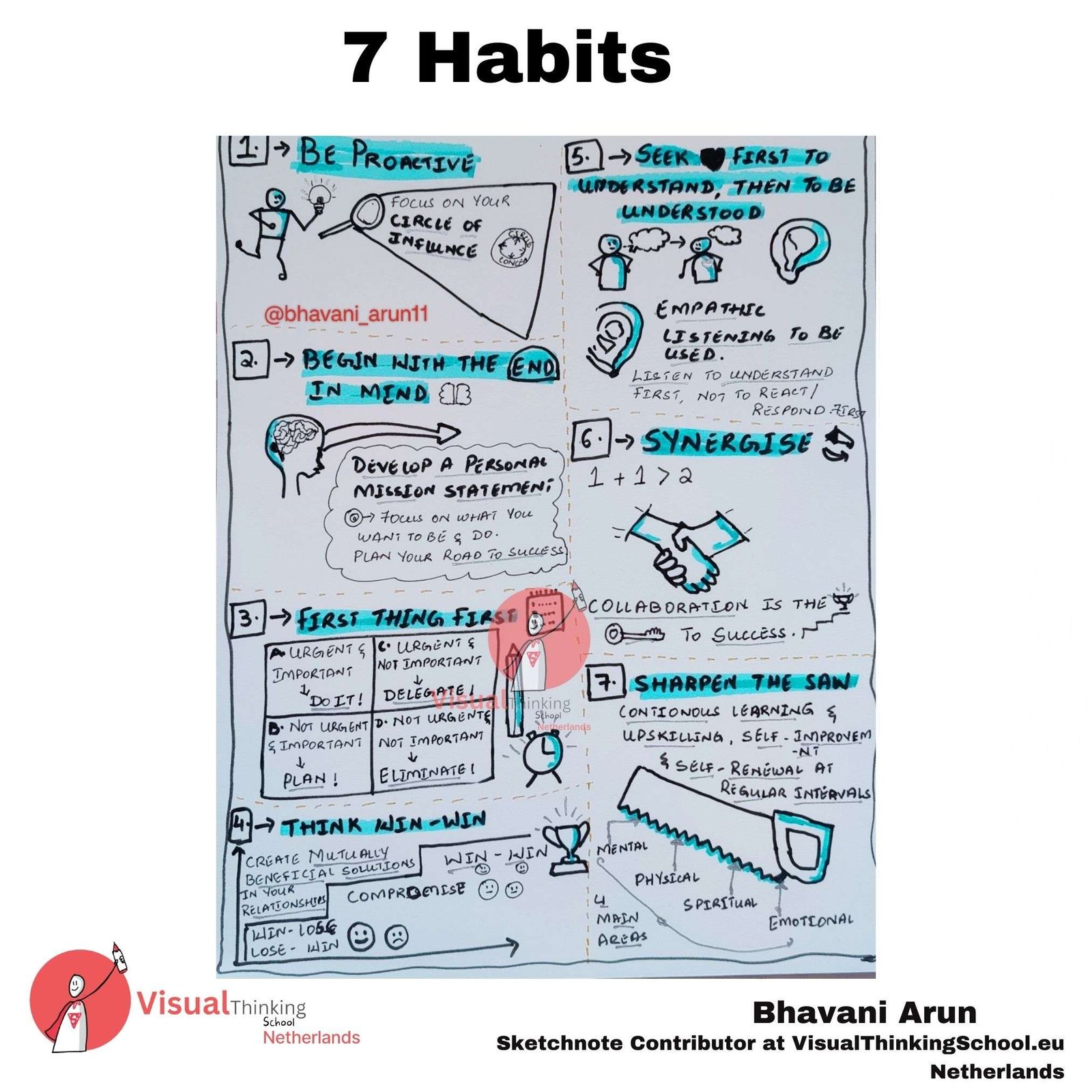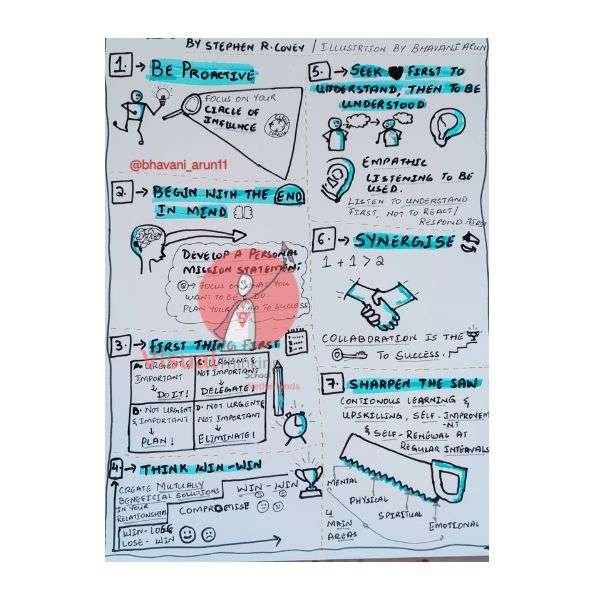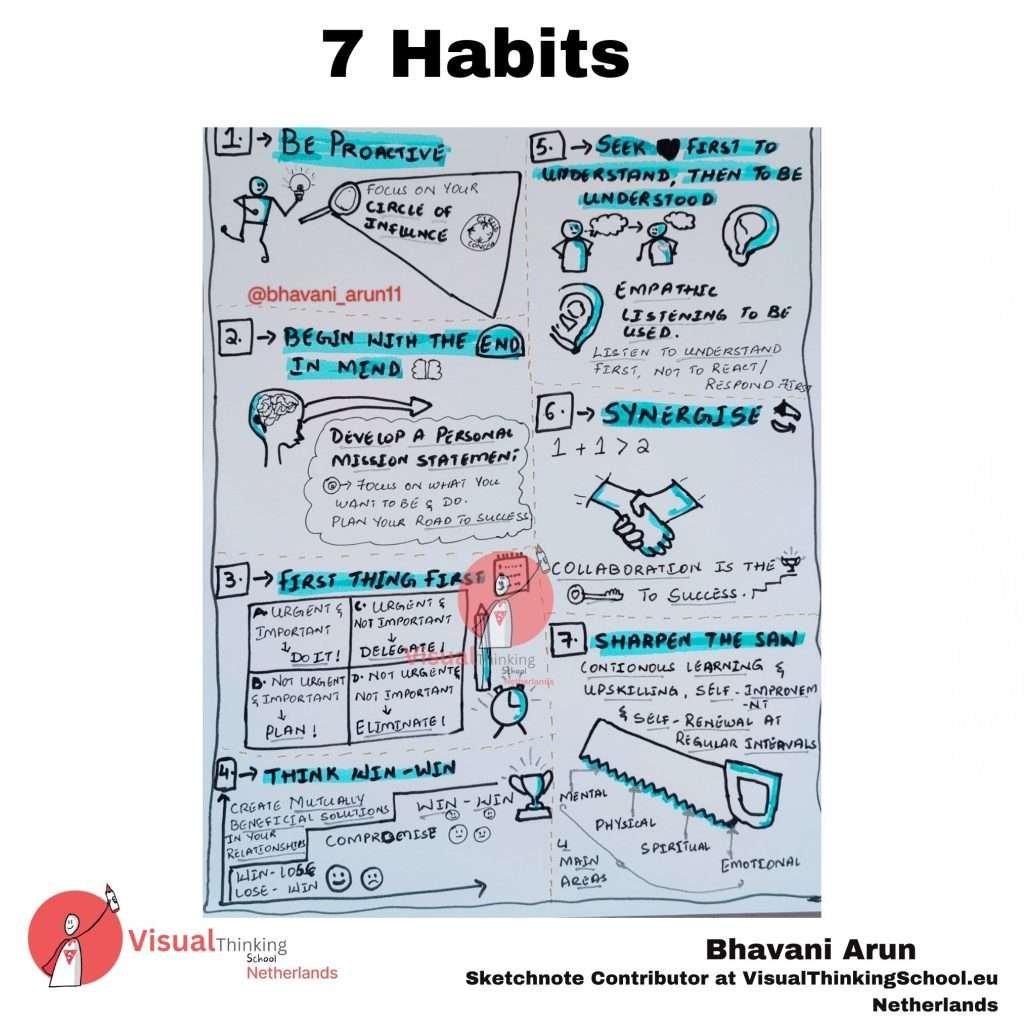

Stephen R. Covey’s influential book, The 7 Habits of Highly Effective People, has become a cornerstone of personal development literature. It outlines a principle-centered approach to achieving success and fulfillment in life. Covey’s framework goes beyond mere techniques and strategies; it’s a roadmap for navigating life’s challenges with integrity, proactivity, and a focus on long-term goals. Let’s delve into each of these 7 Habits and explore how they can help you reach your full potential.
Take charge of your life! This is the core message of Habit 1. Covey emphasizes the importance of moving beyond simply reacting to external circumstances. We are not powerless victims of our environment. Instead, we have the ability to be proactive, to make conscious choices based on our values and principles. The key lies in focusing on our “circle of influence” – the areas we can control, such as our thoughts, behaviors, and choices. By taking proactive steps within this circle, we empower ourselves to shape our reality and achieve our goals.
Covey introduces the concept of two circles: the circle of influence and the circle of concern. The circle of concern encompasses everything that affects us, both positive and negative. This includes things like the weather, economic conditions, other people’s actions, and past events. While these factors may influence our lives, they are largely outside our control. The circle of influence, on the other hand, represents the areas where we can exert control. This includes our thoughts, feelings, actions, and choices. By focusing on our circle of influence and taking proactive steps to improve it, we can begin to influence the things within our circle of concern.
For example, imagine you’re feeling stressed about an upcoming deadline at work. This deadline falls within your circle of concern. However, you can’t control the deadline itself. What you can control is your approach to the task. By being proactive, you can break down the project into manageable steps, create a schedule, and communicate effectively with your colleagues. These proactive steps fall within your circle of influence and can ultimately help you meet the deadline and reduce your stress levels.
Developing a Proactive Mindset
Shifting from a reactive to a proactive mindset requires self-awareness and a willingness to take responsibility for your life. Here are some tips to cultivate a more proactive approach:
By adopting a proactive mindset, you take control of your life and become the architect of your own success.
Imagine yourself standing at a crossroads. Which path will you take? Habit 2 encourages you to develop a clear vision for the future, a personal mission statement that guides your decisions. What do you want to achieve in life? What are your core values? By starting with the end in mind, you can ensure that your actions are aligned with your long-term goals. This doesn’t mean your destination is fixed; life has a way of throwing curveballs. But having a clear vision provides a roadmap and helps you navigate detours and unexpected challenges.
Your personal mission statement is a powerful tool for self-clarity and goal setting. It’s a concise articulation of your core values, aspirations, and principles. An effective mission statement should encompass different aspects of your life, including your career, relationships, personal growth, and contribution to the world.
Here are some prompts to help you craft your personal mission statement:
Once you have a clearer understanding of your desired destination, you can start planning the journey.
Having a clear vision for the future doesn’t just guide your decision-making; it also shapes your perspective on daily challenges. When faced with difficult choices or setbacks, you can ask yourself: “Does this align with my long-term goals and values?” This guiding principle helps you stay focused and motivated, even in the face of temporary obstacles. Remember, your vision may evolve over time as you learn and grow. The important thing is to have a clear direction and revisit your mission statement periodically to ensure it reflects your current aspirations.
Not all tasks are created equal. Some are urgent and require immediate attention, while others are important but can wait. Habit 3 equips you with a framework for prioritizing effectively. Covey proposes a decision-making matrix that categorizes tasks based on their urgency and importance. The key is to focus on what truly matters and avoid getting bogged down by urgent but unimportant activities. By strategically allocating your time and energy to high-importance tasks, you can ensure you’re making progress towards your goals.
Covey’s time management matrix categorizes tasks into four quadrants:
By applying this matrix to your daily to-do list, you can prioritize tasks effectively and ensure you’re spending your time on what truly matters. Remember, effective time management is not just about squeezing more tasks into your day; it’s about allocating your time and energy strategically to achieve your goals.
Collaboration and mutual benefit are at the heart of Habit 4. Success isn’t a zero-sum game. This habit encourages you to seek win-win solutions in all your interactions. Negotiation and compromise are crucial, but so is genuine understanding. Covey emphasizes the importance of “seeking first to understand, then to be understood.” This means listening attentively to the other person’s perspective before trying to get your point across. By approaching interactions with a win-win mentality, you can build stronger relationships, foster trust, and create solutions that benefit everyone involved.
In today’s interconnected world, success often hinges on our ability to collaborate effectively with others. A win-win mentality acknowledges that interdependence is more powerful than independence. By working together, leveraging each other’s strengths, and seeking mutually beneficial solutions, we can achieve more than we ever could alone.
Here are some key principles for achieving win-win outcomes:
By adopting a win-win mentality, you can build stronger relationships, navigate conflicts more effectively, and achieve greater success in all areas of your life.
Effective communication is a two-way street. Habit 5 emphasizes the importance of listening with an intent to understand, not just to reply. Covey argues that true communication involves genuine effort to see the world from the other person’s perspective. This requires active listening and avoiding the urge to interrupt. By seeking to understand first, you can build trust, identify common ground, and find solutions that address everyone’s needs. The key is to practice empathetic listening, putting yourself in the other person’s shoes and understanding their feelings and experiences.
Miscommunication is a pervasive issue that can lead to a multitude of problems in both personal and professional settings. Here’s how a lack of understanding can hinder success:
Developing Empathic Listening Skills
Empathic listening is the cornerstone of Habit 5. It involves going beyond simply hearing the words someone is saying and actively trying to understand their underlying thoughts, feelings, and motivations. Here are some tips for becoming a more empathetic listener:
By practicing empathetic listening, you can build stronger relationships, resolve conflicts more effectively, and foster a more collaborative and productive environment.
The whole is greater than the sum of its parts. This is the essence of Habit 6. Synergy is about valuing the differences and strengths of others. When we work together effectively, leveraging each other’s talents and perspectives, we can achieve more than we ever could alone. Teamwork is essential for accomplishing great things. By embracing diversity of thought, appreciating different approaches, and working towards a common goal, we can achieve truly exceptional results.
The Power of Diversity
Synergy thrives on diversity. Different backgrounds, experiences, and perspectives bring a wealth of knowledge and creativity to the table. By valuing these differences and fostering an inclusive environment, we can unlock the true potential of collaboration.
Strategies for Building Synergy
Here are some ways to foster synergy in your team or workplace:
By embracing synergy and working together effectively, you can unlock a new level of creativity, innovation, and problem-solving in any endeavor.
Just like any tool, we need regular maintenance to function at our best. Habit 7 emphasizes the importance of continual self-renewal. We need to take care of ourselves physically, mentally, socially, and spiritually to maintain our effectiveness. This includes activities like exercise, healthy eating, getting enough sleep, reading, learning new skills, spending time with loved ones, and finding meaning and purpose in life. By investing in ourselves, we can replenish our energy, enhance our skills, and maintain a positive outlook on life’s challenges.
The Four Dimensions of Self-Renewal
Covey outlines four key dimensions of self-renewal:
By attending to all four dimensions of self-renewal, you can cultivate a balanced and fulfilling life that allows you to reach your full potential.

The 7 Habits of Highly Effective People offer a comprehensive and timeless framework for personal and professional development. By incorporating these principles into your daily life, you can develop the …proactivity, integrity, and interpersonal skills necessary to navigate life’s challenges and achieve your goals. The 7 Habits are not a quick fix or a set of rigid rules; they are a roadmap for continuous growth and self-improvement. As you integrate these habits into your life, expect to experience a shift in your mindset, a renewed sense of purpose, and a greater capacity to achieve your full potential.
We conduct online and in-person certification trainings on our Trade Marked Training on Business Sketchnotes ™.
We have an open challenge in our trainings : If you can not draw after our 9 hours of trainings, we will close our trainings FOR EVER !! ..and we are still waiting for that one person even after training more than 38000 professionals.
You can also join our whatsapp community to learn from those who have attended our trainings

We trained more than 38000 professional and gave corporate trainings in more than 65+ top notch companies

Check Our Trainings